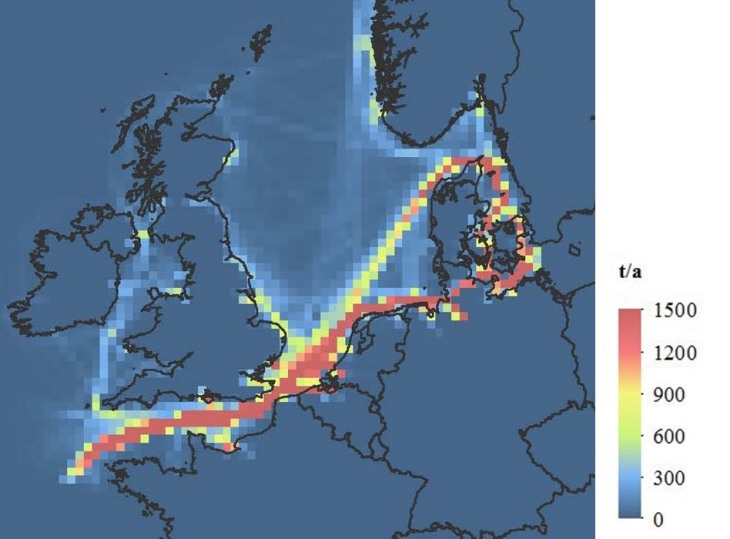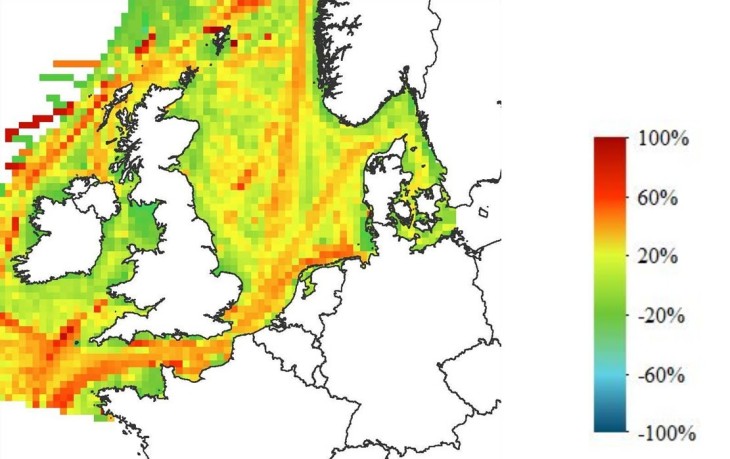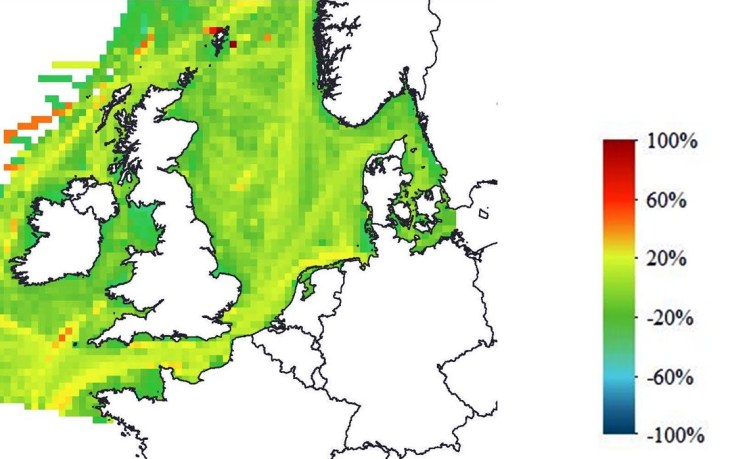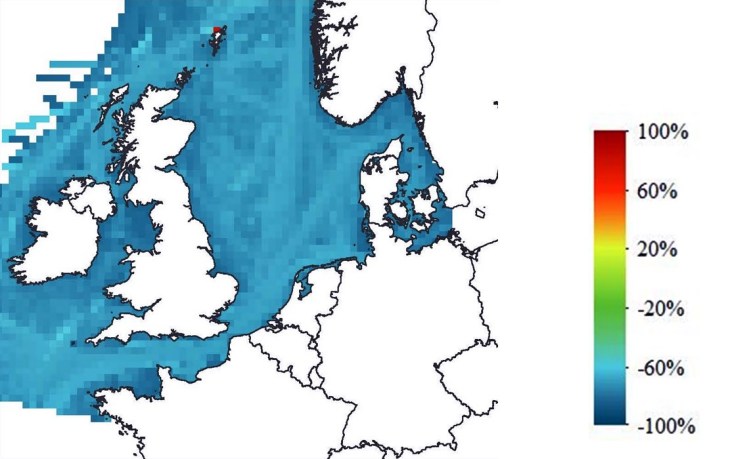NOx Emissions
Anthropogenic sources
NOx is a collective name for the gaseous pollutants nitrodgen oxide (NO) and nitrogen dioxide (NO2). These are formed when fuel is burned at high temperatures. This, they stem from motor vehicle exhaust (traffic), all types of combustion plants (oil, gas, coal etc.) or industrial boilers. NOx is also formed through photo-oxidation processes of NH3 which is mainly emitted by agriculture processes.
Natural sources
Lightning (electrostatic discharges in the atmosphere), emissions from soil and forest fires are natural sources of the pollutant.
Annual total emissions NOx

Emissions in the hotspots, which are mainly urban areas, reach 10000 t/a.
Annual NOx emissions by ships

Ship emissions over the English Channel and over the main shipping routes are between 1200 and 1500 tons per year and grid cell.
Scenario No ECA: NOx Emission Change

If the North Sea will not become an ECA the contributions of ships to the NOx emissions will increase by 40% until 2030.
Scenario ECA SCR 21: NOx Emission Change

In case the TIER III regulations enter into force by 2021, the contribution of ships to the emissions increases only by about 20% on the main shipping routes.
Scenario ECA SCR 16: NOx Emission Change
In case the TIER III regulations enter into force already by 2016, the increase of the ship contribution to the emissions is significantly less than 20%.
Scenario ECA opt: NOx Emission Change

In the ECA opt scenario the contribution of ships to the total NOx emissions is reduced by about 80%. It is by far the highest reduction achieved with any of the scenarios.
